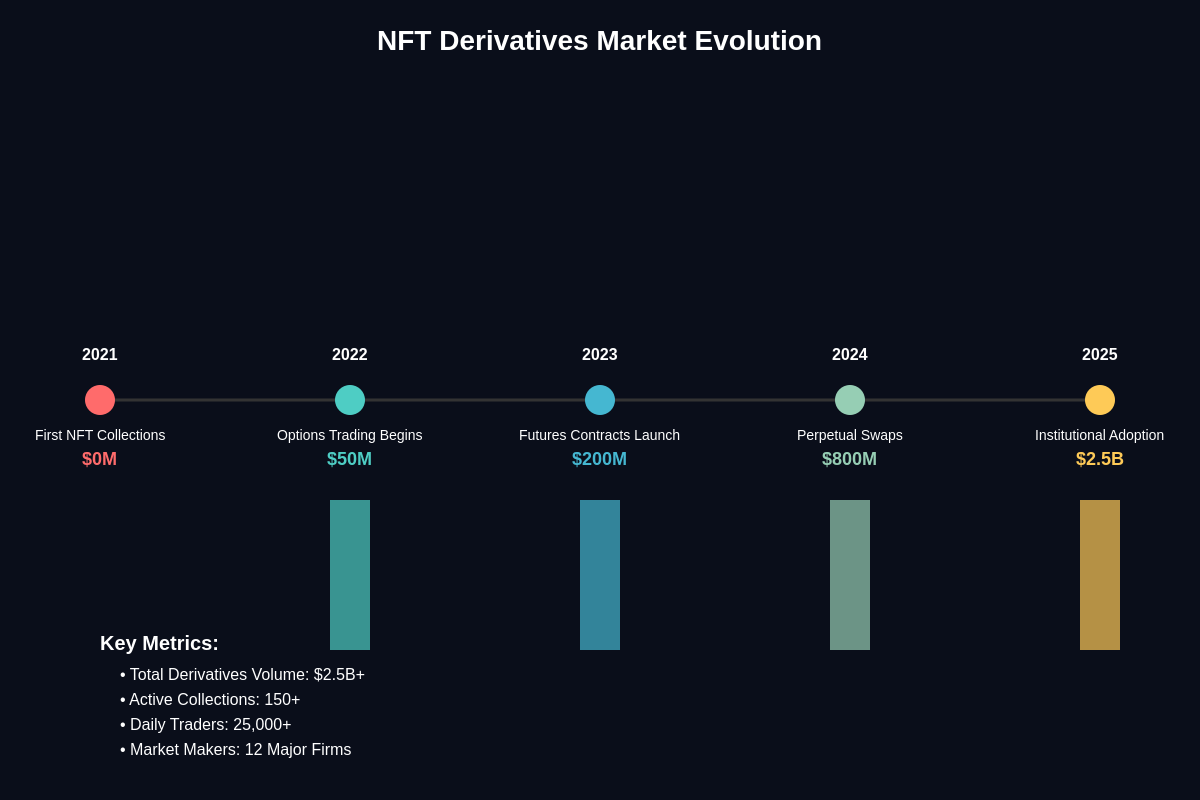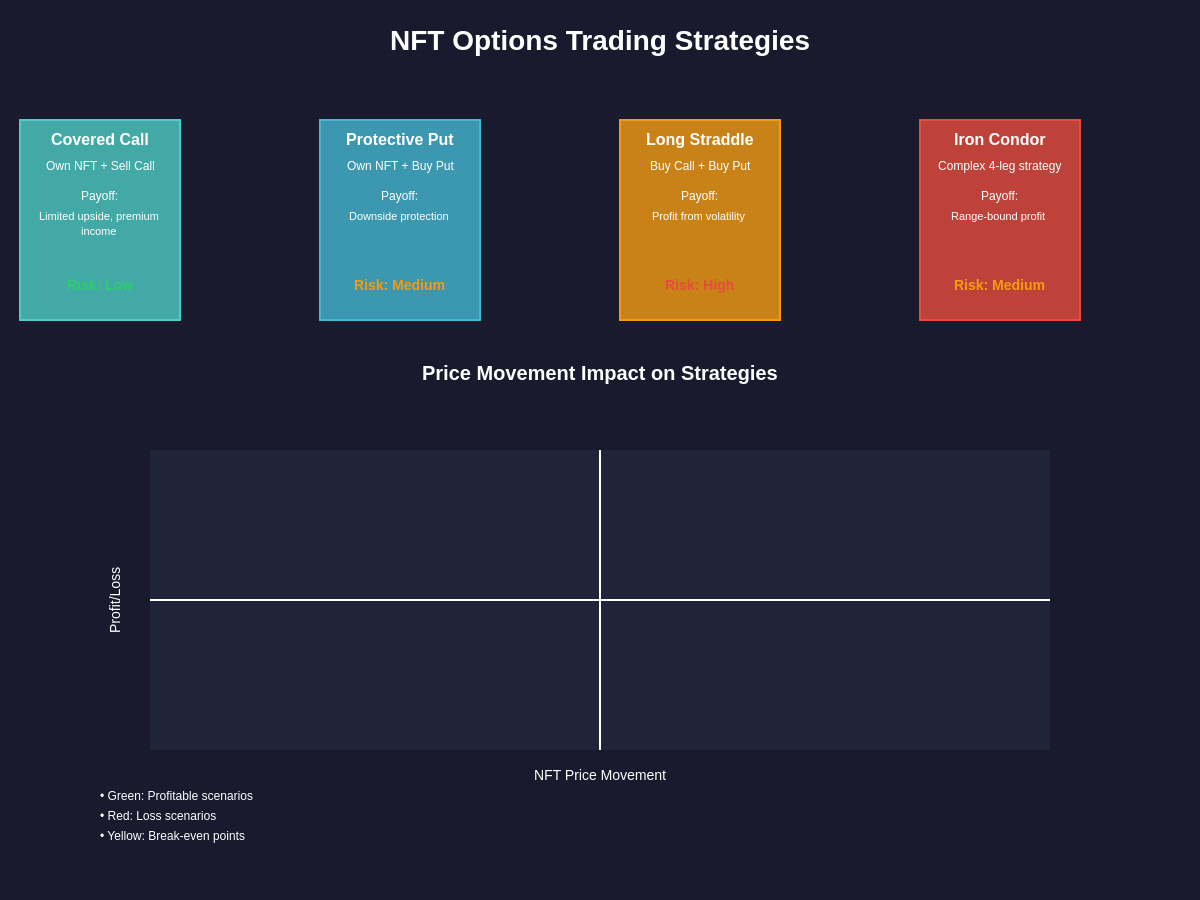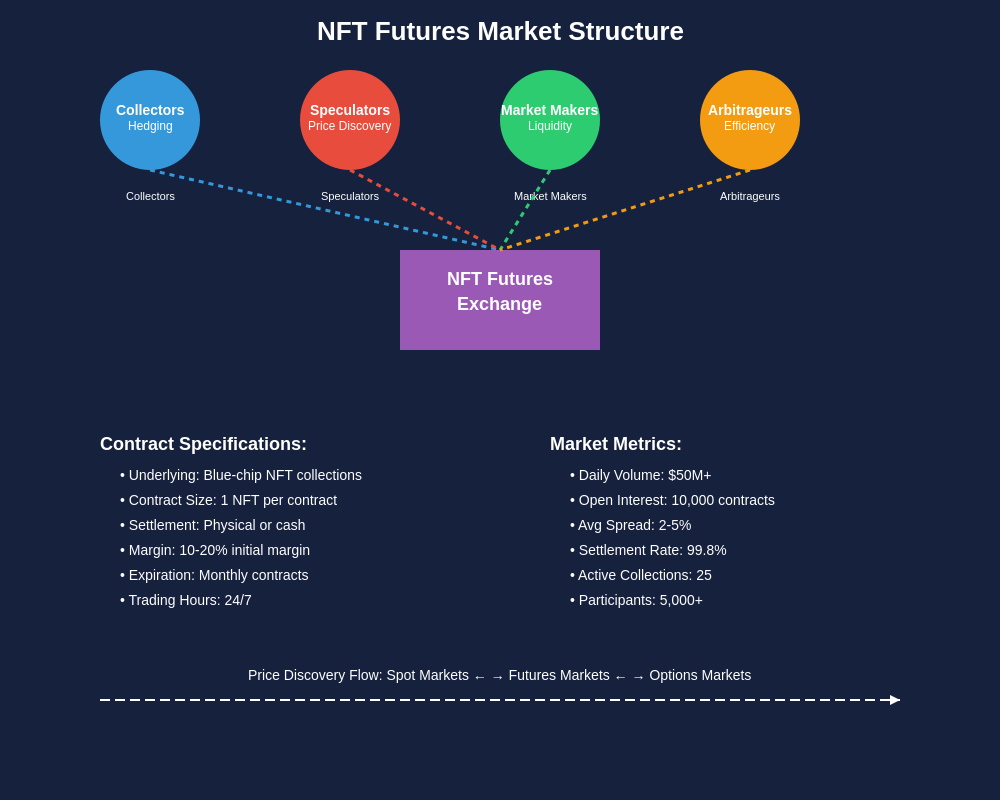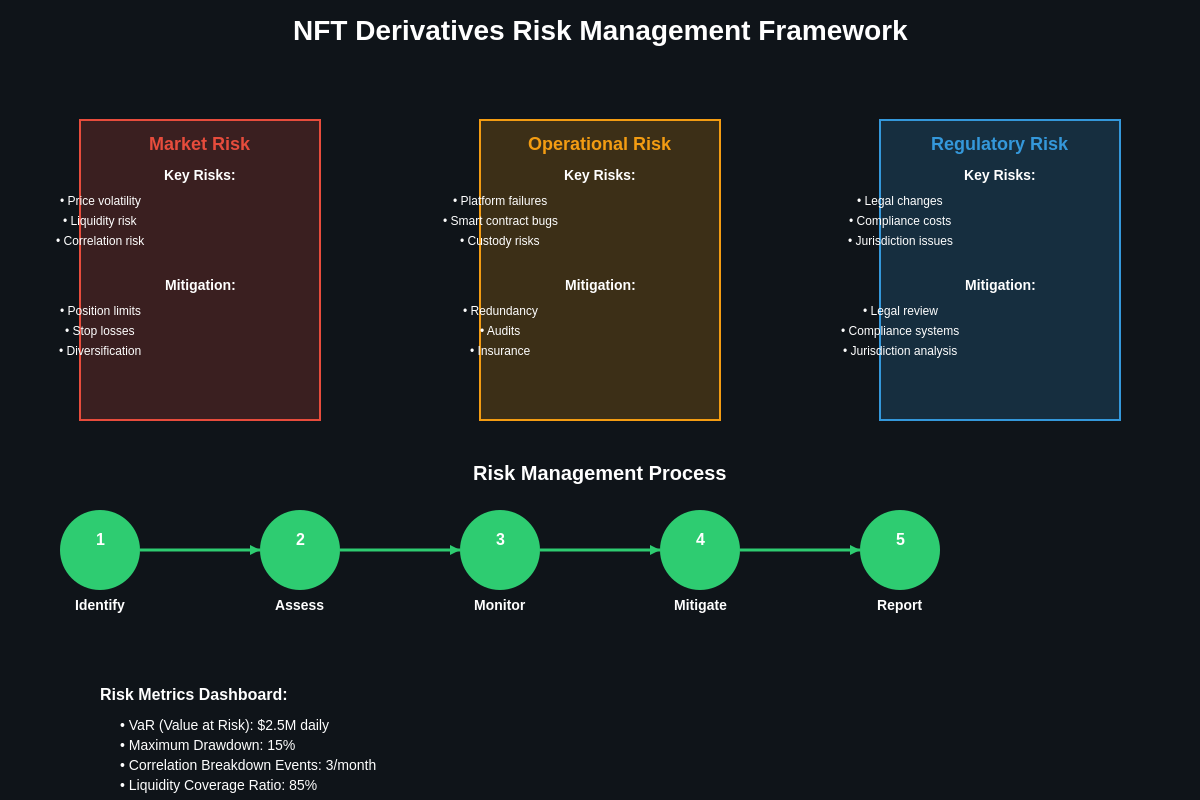The Evolution of NFT Financial Markets
The non-fungible token ecosystem has undergone a remarkable transformation from simple digital collectibles to sophisticated financial instruments that mirror traditional derivatives markets. NFT derivatives represent the natural evolution of digital asset trading, introducing options, futures, perpetual swaps, and other complex financial products that allow traders to speculate on NFT price movements without necessarily owning the underlying digital assets. This development has profound implications for liquidity provision and price discovery in NFT markets, creating new opportunities for both retail and institutional participants while introducing sophisticated risk management tools that were previously unavailable in the digital collectibles space.
The emergence of NFT derivatives markets has been driven by several key factors including the need for enhanced liquidity in often illiquid NFT markets, the desire for sophisticated risk management tools among large NFT holders, and the growing institutional interest in digital assets as an alternative investment class. These financial instruments allow market participants to hedge existing NFT positions, speculate on future price movements of specific collections or the broader NFT market, and implement complex trading strategies that were previously impossible in the spot NFT market.

Traditional financial markets have long relied on derivatives to enhance price discovery, improve market efficiency, and provide risk management tools for various stakeholders, and the NFT space is now experiencing a similar evolution as the market matures and becomes more sophisticated. The introduction of standardized derivatives contracts for blue-chip NFT collections has created new opportunities for algorithmic trading, market making, and institutional participation while also introducing new risks and regulatory considerations that market participants must carefully navigate.
Understanding NFT Options Markets
NFT options represent one of the most significant innovations in digital asset derivatives, providing holders with the right but not the obligation to buy or sell specific NFT collections at predetermined prices within specified time frames. These instruments have revolutionized how traders approach NFT investments by introducing concepts from traditional options trading including strike prices, expiration dates, premiums, and complex strategies involving multiple options positions. The mechanics of NFT options differ significantly from traditional equity options due to the unique characteristics of non-fungible tokens including their indivisible nature, high price volatility, and limited liquidity in many collections.
Call options on NFT collections allow traders to participate in potential upside price movements while limiting downside risk to the premium paid, making them particularly attractive during periods of market uncertainty when NFT prices may experience significant volatility. Put options provide protection against downside price movements, enabling NFT holders to hedge their positions without having to sell their digital assets in potentially illiquid markets. The pricing of NFT options presents unique challenges due to the lack of standardized pricing models and the difficulty in establishing accurate volatility measurements for collections that may trade infrequently.
The development of standardized options contracts for major NFT collections like CryptoPunks, Bored Ape Yacht Club, and Art Blocks has created new opportunities for sophisticated trading strategies including covered calls, protective puts, straddles, and strangles that allow traders to profit from various market scenarios while managing risk exposure. Market makers in NFT options face unique challenges including the need to hedge positions in illiquid underlying markets, the difficulty in accurately pricing options for collections with limited trading history, and the risk of sudden changes in collection popularity that can dramatically affect option values.

The settlement mechanisms for NFT options vary depending on the platform and contract specifications, with some options settling in cryptocurrency while others require physical delivery of the underlying NFT, creating additional complexity for traders and market makers who must carefully consider the implications of different settlement methods when designing trading strategies and risk management procedures.
NFT Futures and Forward Contracts
The introduction of NFT futures contracts has brought standardization and efficiency to digital asset trading by allowing market participants to agree on future delivery of NFT collections at predetermined prices, effectively creating a forward-looking price discovery mechanism that can help reduce volatility in spot markets. These contracts typically specify the collection, delivery date, contract size, and settlement terms, providing the standardization necessary for institutional participation and algorithmic trading strategies that require predictable contract specifications and reliable execution mechanisms.
NFT futures markets serve multiple critical functions including price discovery for collections that may trade infrequently in spot markets, risk management for holders of large NFT positions who need hedging mechanisms, and speculation opportunities for traders who want to express views on future NFT prices without the capital requirements and storage considerations associated with owning physical NFTs. The standardized nature of futures contracts has also enabled the development of sophisticated market analysis tools and technical indicators that help traders make informed decisions about position sizing and timing.
Forward contracts, which are customized agreements between two parties for future delivery of specific NFTs, offer greater flexibility than standardized futures but introduce counterparty risk and may be more difficult to exit before expiration. These instruments are particularly useful for over-the-counter transactions involving rare or unique NFTs that may not be suitable for standardized futures contracts, allowing sophisticated investors to structure custom deals that meet their specific risk and return objectives while providing certainty about future transaction terms.
The mechanics of NFT futures trading involve margin requirements, daily settlement procedures, and delivery specifications that can be complex due to the unique nature of digital assets and the various blockchain networks on which NFTs are issued. Traders must understand concepts including initial margin, maintenance margin, margin calls, and the relationship between futures prices and spot prices, which can be influenced by factors unique to NFT markets including storage costs, insurance considerations, and the risks associated with holding digital assets on various platforms.
Settlement procedures for NFT futures can involve physical delivery of the underlying tokens or cash settlement based on predetermined pricing methodologies, with each approach presenting different advantages and challenges for market participants who must carefully consider the implications of their chosen settlement method on their overall trading strategy and risk management procedures.

Perpetual Swaps and Synthetic Exposure
Perpetual swap contracts for NFT collections have emerged as one of the most popular derivatives instruments, providing traders with synthetic exposure to NFT price movements without expiration dates or the need for physical settlement. These instruments, which originated in cryptocurrency markets, have been adapted for NFT trading and offer several advantages including continuous trading opportunities, flexible position sizing, and the ability to maintain long or short positions indefinitely subject to funding rate mechanisms that help keep perpetual swap prices aligned with underlying spot prices.
The funding rate mechanism in NFT perpetual swaps serves as a critical price stabilization tool that encourages arbitrage activity between derivatives and spot markets, helping to maintain price efficiency and prevent significant deviations between perpetual swap prices and the underlying NFT collection values. When perpetual swap prices trade at a premium to spot prices, long position holders pay funding to short position holders, creating an incentive for traders to short the perpetual swap and buy the underlying NFT, which helps bring prices back into alignment.
Synthetic NFT exposure through perpetual swaps offers several advantages over direct NFT ownership including enhanced liquidity, fractional position sizing, and the ability to take short positions that are difficult or impossible to implement in spot NFT markets. Traders can use perpetual swaps to implement sophisticated strategies including basis trading, where they simultaneously hold long positions in underlying NFTs and short positions in perpetual swaps to capture price differences, and momentum strategies that take advantage of trending price movements in NFT collections.
The risk management considerations for NFT perpetual swaps include understanding liquidation mechanisms, monitoring funding rates, and managing leverage exposure, as these instruments typically allow for significant leverage that can amplify both profits and losses. Market participants must also consider the impact of sudden changes in funding rates, which can occur during periods of high volatility or when there are significant imbalances between long and short positions in the market.
Cross-margin and isolated margin systems in NFT perpetual swap trading provide different risk management approaches, with cross-margin allowing profits from other positions to support margin requirements for NFT swaps while isolated margin limits risk exposure to the specific amount allocated to each position, giving traders flexibility in how they manage their overall portfolio risk while participating in NFT derivatives markets.
Market Structure and Liquidity Dynamics
The market structure of NFT derivatives differs significantly from traditional derivatives markets due to the unique characteristics of underlying NFT assets, including their non-fungible nature, high price volatility, and concentration of value in specific blue-chip collections. Market makers in NFT derivatives face unique challenges including the need to hedge positions in illiquid spot markets, the difficulty in establishing fair value for derivatives when underlying assets trade infrequently, and the risk of sudden changes in collection popularity that can dramatically affect derivatives pricing and demand.
Liquidity provision in NFT derivatives markets requires sophisticated algorithms and risk management systems that can handle the unique characteristics of digital assets while providing competitive pricing and reliable execution for market participants. Market makers must maintain hedging relationships with spot NFT markets, manage inventory risk across multiple collections and derivatives instruments, and adjust pricing models based on changing market conditions and collection-specific factors that may not be relevant in traditional financial markets.
The concentration of trading activity in major NFT collections has created a tiered market structure where derivatives for blue-chip collections like CryptoPunks and Bored Ape Yacht Club enjoy relatively high liquidity and tight spreads, while derivatives for smaller or newer collections may have limited trading activity and wider bid-ask spreads. This market structure presents both opportunities and challenges for traders, as liquid derivatives markets provide better execution and lower transaction costs but may also be more efficient and therefore offer fewer arbitrage opportunities.
Cross-platform arbitrage opportunities exist between different NFT derivatives exchanges, though these opportunities may be limited by factors including transfer times between platforms, varying margin requirements and trading fees, and differences in contract specifications that can make direct arbitrage strategies complex to implement. Sophisticated trading firms have developed infrastructure to monitor price differences across multiple platforms and execute arbitrage strategies when opportunities arise, contributing to improved price efficiency across the NFT derivatives ecosystem.
The role of institutional participants in NFT derivatives markets continues to evolve as traditional financial institutions develop infrastructure and expertise for digital asset trading, potentially bringing additional liquidity and sophistication to NFT derivatives markets while also introducing new regulatory considerations and compliance requirements that could affect market structure and participant behavior.
Risk Management and Hedging Strategies
Effective risk management in NFT derivatives trading requires understanding both traditional derivatives risk factors and unique considerations specific to digital assets and non-fungible tokens. Portfolio managers and traders must consider factors including basis risk between derivatives and underlying NFT prices, liquidity risk in both derivatives and spot markets, operational risk associated with digital asset custody and platform reliability, and regulatory risk stemming from the evolving legal framework surrounding NFT trading and derivatives.
Hedging strategies for NFT holders have become increasingly sophisticated with the development of derivatives markets, allowing collectors and investors to protect their positions against adverse price movements while maintaining exposure to potential upside. Delta hedging strategies using NFT options can provide dynamic protection that adjusts to changing market conditions, while static hedging approaches using futures or forward contracts can provide more predictable protection at potentially lower transaction costs.
Cross-hedging strategies that use derivatives on correlated NFT collections or broader cryptocurrency markets can provide risk management opportunities when direct hedging instruments are not available or are prohibitively expensive. For example, holders of smaller NFT collections might hedge using derivatives on major collections or Ethereum-based instruments, though this approach introduces basis risk that must be carefully monitored and managed.
Value-at-risk and stress testing methodologies for NFT derivatives portfolios must account for the unique characteristics of digital assets including extreme price volatility, correlation breakdowns during market stress, and the potential for complete loss of value in specific collections. Risk managers must develop scenarios that consider factors including changes in collection popularity, technological risks affecting specific blockchain networks, and regulatory developments that could impact NFT trading and ownership.
The implementation of risk limits and position sizing rules for NFT derivatives trading requires careful consideration of factors including the leverage inherent in derivatives instruments, the potential for rapid changes in market conditions, and the limited liquidity that may be available for position unwinding during stress periods. Risk management systems must be designed to handle the unique characteristics of NFT markets while providing the flexibility necessary for effective trading and portfolio management.

Regulatory Landscape and Compliance Considerations
The regulatory environment for NFT derivatives remains complex and evolving, with different jurisdictions taking varying approaches to the classification and regulation of these instruments. Regulatory authorities are grappling with questions including whether NFT derivatives should be treated as commodity derivatives, securities derivatives, or entirely new categories of financial instruments that require specialized regulatory frameworks. The answers to these questions have significant implications for market participants including licensing requirements, capital adequacy standards, reporting obligations, and permissible trading strategies.
Compliance considerations for NFT derivatives platforms include know-your-customer requirements, anti-money laundering procedures, and reporting obligations that may vary depending on the jurisdiction and the specific classification of NFT derivatives under local regulations. Platforms must also consider international regulatory requirements when offering services to customers in multiple jurisdictions, potentially requiring different compliance procedures and risk management approaches for different customer segments.
The intersection of NFT derivatives regulation with broader cryptocurrency and digital asset regulations creates additional complexity for market participants who must navigate multiple regulatory frameworks that may have overlapping or conflicting requirements. Market participants must also consider the potential for regulatory changes that could affect the permissibility of certain NFT derivatives trading strategies or the operation of derivatives platforms, requiring flexible compliance systems that can adapt to changing regulatory requirements.
Tax implications of NFT derivatives trading vary significantly across jurisdictions and may depend on factors including the specific structure of derivatives contracts, the treatment of underlying NFT assets, and the characterization of trading activities as investment or business activities. Traders and investors must work with qualified tax professionals to understand their obligations and ensure compliance with applicable tax laws, which may require detailed record-keeping and reporting procedures.
International coordination among regulatory authorities is becoming increasingly important as NFT derivatives markets develop global reach, with platforms and participants operating across multiple jurisdictions. The development of international standards and cooperative enforcement mechanisms will likely play a crucial role in the future development of NFT derivatives markets and the compliance requirements that market participants must meet.
Technology Infrastructure and Platform Architecture
The technology infrastructure supporting NFT derivatives trading must address unique challenges including the integration of traditional derivatives trading systems with blockchain networks, the management of digital asset custody for settlement purposes, and the development of pricing and risk management systems that can handle the unique characteristics of NFT markets. Platform architecture decisions have significant implications for system performance, security, reliability, and the range of derivatives products that can be effectively supported.
Smart contract technology plays a crucial role in NFT derivatives platforms, enabling automated execution of derivatives contracts, transparent settlement procedures, and programmable risk management features that can operate without traditional intermediaries. However, smart contract implementation also introduces unique risks including code vulnerabilities, governance risks associated with protocol upgrades, and the potential for blockchain network congestion to affect trading and settlement operations.
The integration of oracle systems for NFT price feeds presents significant technical challenges due to the often illiquid nature of NFT markets and the difficulty in establishing reliable price discovery mechanisms for collections that may trade infrequently. Platform operators must carefully select and configure oracle systems to provide accurate and timely price information while maintaining security and preventing manipulation attempts that could affect derivatives pricing and settlement.
High-frequency trading and algorithmic trading capabilities in NFT derivatives markets require sophisticated technology infrastructure that can handle the unique characteristics of blockchain-based trading while providing the low-latency execution that algorithmic traders require. Platform operators must balance the need for high-performance trading systems with the inherent limitations of blockchain networks and the additional complexity introduced by NFT-specific market characteristics.
User interface and experience design for NFT derivatives platforms must accommodate both sophisticated institutional traders who require advanced charting and analysis tools and retail participants who may be new to derivatives trading and need educational resources and simplified interfaces. Platform operators must also consider the unique aspects of NFT trading including the visual nature of many NFT collections and the community aspects that play important roles in NFT market dynamics.
Economic Impact and Market Efficiency
The introduction of derivatives markets has had profound effects on NFT market efficiency, price discovery, and overall market development, creating new mechanisms for price formation and risk management while also introducing additional complexity and potential sources of market volatility. Economic analysis of NFT derivatives markets reveals both positive effects including improved liquidity and more efficient price discovery as well as potential negative effects including increased speculation and market complexity that may be difficult for some participants to navigate effectively.
Price discovery mechanisms in NFT derivatives markets can provide valuable information about market expectations for future NFT prices, helping to reduce uncertainty and improve capital allocation decisions by both individual collectors and institutional investors. The forward-looking nature of derivatives pricing can also help identify emerging trends in NFT markets and provide early warning signals about potential changes in collection valuations or broader market sentiment.
The impact of derivatives trading on underlying NFT spot markets remains a subject of ongoing research and debate, with some studies suggesting that derivatives trading can improve spot market liquidity and reduce volatility while others point to potential destabilizing effects during periods of market stress. The relationship between derivatives and spot markets in NFTs may differ from traditional financial markets due to the unique characteristics of digital assets and the relatively small size of most NFT markets compared to traditional financial markets.
Market efficiency improvements from NFT derivatives trading include better arbitrage opportunities that help align prices across different platforms and trading venues, improved hedging mechanisms that allow market participants to manage risk more effectively, and enhanced price transparency that can benefit all market participants by providing better information about fair value for NFT collections.
The economic implications of NFT derivatives extend beyond direct market effects to include impacts on collection development, creator compensation, and the broader digital art and collectibles ecosystem. The availability of sophisticated financial instruments may attract new types of participants to NFT markets while also changing the incentives and risk profiles for existing participants including collectors, creators, and platform operators.
Future Developments and Market Evolution
The future evolution of NFT derivatives markets is likely to be shaped by several key trends including the development of more sophisticated pricing models and risk management tools, the integration of artificial intelligence and machine learning technologies for trading and market making, and the potential expansion of derivatives markets to include new types of digital assets and blockchain-based instruments. Innovation in NFT derivatives is also likely to be driven by emerging market analysis techniques and the development of new trading strategies that take advantage of the unique characteristics of digital asset markets.
The integration of decentralized finance protocols with NFT derivatives trading presents opportunities for new types of financial products including automated market makers for NFT derivatives, decentralized lending and borrowing using NFT derivatives as collateral, and governance tokens that provide exposure to NFT derivatives protocol performance. These developments could significantly expand the range of available financial instruments and create new opportunities for both retail and institutional participants.
Cross-chain derivatives trading represents another significant area of potential development, as the NFT ecosystem becomes increasingly multi-chain and traders seek to access opportunities across different blockchain networks. The development of interoperability solutions and cross-chain derivatives protocols could create more unified and efficient markets while also introducing new technical and operational challenges that platform operators must address.
The potential for NFT derivatives to evolve beyond simple price-based instruments to include more complex products based on NFT utility, governance rights, or other non-price characteristics represents an interesting area of innovation that could create entirely new categories of financial instruments. These developments could include derivatives based on NFT rental yields, governance voting outcomes, or community engagement metrics that provide exposure to different aspects of NFT value creation.
Institutional adoption of NFT derivatives is likely to drive continued market development and sophistication, with traditional financial institutions potentially bringing additional liquidity, risk management expertise, and regulatory compliance capabilities to NFT derivatives markets. This institutional participation could also lead to the development of new products and services specifically designed for institutional clients including prime brokerage services, custody solutions, and sophisticated risk management tools.
Conclusion and Market Outlook
The development of NFT derivatives markets represents a significant milestone in the maturation of digital asset trading, introducing sophisticated financial instruments that provide new opportunities for risk management, speculation, and investment while also creating additional complexity and potential risks that market participants must carefully navigate. The evolution from simple digital collectibles to complex financial instruments mirrors the historical development of traditional financial markets and suggests that NFT derivatives will continue to play an increasingly important role in the broader digital asset ecosystem.
The success of NFT derivatives markets will ultimately depend on several key factors including the continued development of reliable technology infrastructure, the establishment of appropriate regulatory frameworks that provide clarity while allowing for innovation, and the evolution of market practices and standards that promote transparency, efficiency, and fair dealing among all participants. Market participants must also continue to develop sophisticated risk management capabilities and educational resources that help ensure the responsible development and use of these powerful financial instruments.
The long-term outlook for NFT derivatives markets remains positive, with continued growth expected as the underlying NFT markets mature and institutional participation increases. However, market participants should be prepared for continued volatility and evolution as these markets develop, requiring flexible strategies and robust risk management systems that can adapt to changing market conditions and regulatory requirements. The intersection of traditional financial markets with blockchain technology and digital assets continues to create new opportunities and challenges that will shape the future development of NFT derivatives and the broader digital asset ecosystem.
Disclaimer: This article is for informational purposes only and does not constitute financial advice. NFT derivatives trading involves significant risks including the potential for substantial losses. The NFT and derivatives markets are highly volatile and speculative. Regulatory frameworks for NFT derivatives are still evolving and may change significantly. Before engaging in NFT derivatives trading, readers should conduct their own research, understand the risks involved, and consider consulting with qualified financial and legal professionals. Past performance does not guarantee future results, and the value of NFT derivatives can fluctuate dramatically based on market conditions, regulatory changes, and other factors beyond investors’ control.